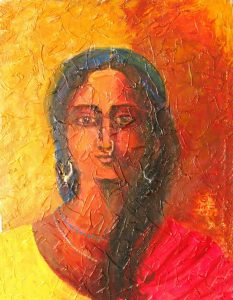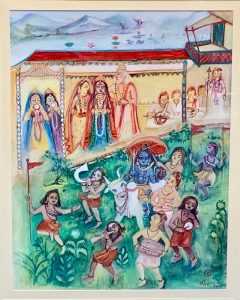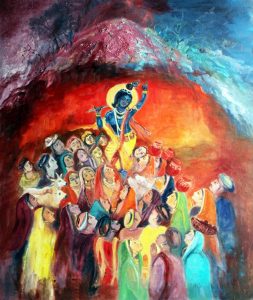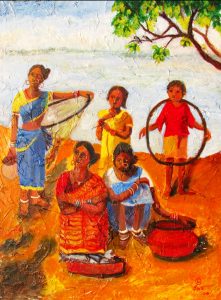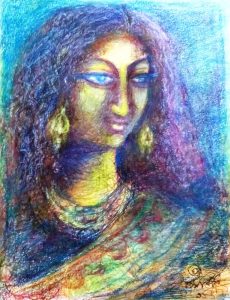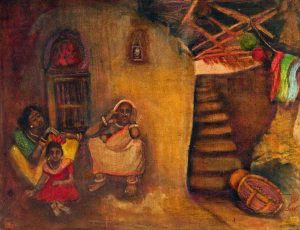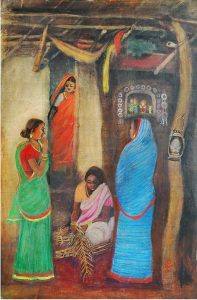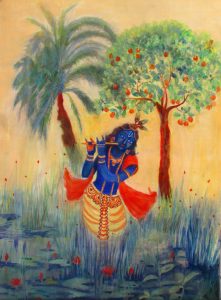Art is a way to communicate to people about the cultural, spiritual heritage of India

In these challenging and difficult times of Covid-19, veteran artist UMA BARDHAN feels artists, through their artworks and creativity, should help everyone join hands as well as help everyone forget all their differences to face this unprecedented challenge. Not this alone, they should be a source of inspiration for everyone, she says.
“This pandemic has closed a few galleries. A number of art shows and exhibitions have been indefinitely postponed like the one I was to have at the Academy of Fine Arts in mid-April. However, we should embrace and accept this new norm and migrate to online format of exhibition with the same spirit and enthusiasm,” puts in the septuagenarian artist, adding that media houses and radio channels with a wide reach should help artists in organising online art fairs. “A global art movement using social media with proceedings to support frontline warriors for Covid-19 should be started. Home quarantine results in more viewership on the digital platforms. Artists should be part of more and more online exhibitions so that they get to showcase one’s creativity and remain connected with art connoisseurs virtually,” says Bardhan.
Born in 1945, Bardhan hails from Kolkata but is based out of Gurugram. She specialises in figurative paintings, landscapes in water colour on silk, oil on canvas and water mixable oil on canvas. A sneak peek into her artworks remind you of the influence of the Bengal School.
Excerpts from an email interaction between the artist and Saurabh Tankha:
The Bengal School of Art was once an art movement with names like Abanindranath Tagore, Nandalal Bose, Manishi Dey, Kalipada Ghoshal. Where does it stand today ?
Originally, the Bengal School of Art was a revolutionary movement which promoted Indian identity and freedom which was suppressed by British Rule. Eminent artists like late Mrinal Kanti Das, Dhirendranath Brahma, Ganesh Payne, Bikash Bhattarjee and their innumerable students have been carrying on the tradition of the Bengal School of Painting. Pioneers like Jogen Chowdhury and Sanat Chatterjee are the present-day flagbearers who have studied various aspects of the Bengal School of Painting in their respective careers.
I, myself, have been inspired and influenced by the heritage of Bengal School of Painting and many of my paintings carry elements of great art movement. I believe, the present-day art students in the Government College of Arts, will carry the great legacy of the Bengal School.
What made you decide on mainly painting gods and goddesses?
My paintings have always been an expression of my inner self, an expression of happiness, love and creativity within me. As I was spiritual from childhood, Hindu gods and goddesses always remained part of my art theme as they were very close to my heart. Besides representing Mother Nature in bounteous colours, there is also an expression at the lives of women at rural Bengal in my paintings.
The first time you felt the urge to express yourself through painting…
I have travelled a lot as I was married in Kolkata but my mom and dad (an eye surgeon) used to live in Rishikesh. Also, as a member of Art Group, I travelled along with my mentor, Sree Maniklal Banarjee, to the interiors of West Bengal for day-long Art Camp trips. I would spend time observing their culture, lifestyle and daily activities and was inspired to showcase these characters, especially women in my artworks. For eg: women doing weaving, daily chores etc. In myriads of exhibition I had participated in India or abroad, solo or group, my hard work pays off when people appreciate my works and curiously ask questions about them.
What was the reaction back home when you told everyone that you wanted to be an artist?
There was no opposition from my family and my husband was very supportive about me joining art classes. Later on my children supported me a lot. My eldest grandson, an architect, designed and developed my website — www.umabardhan.com.
Who has been the most inspirational person in your life & why?
My art teacher, artist Sree Maniklal Banerjee who introduced me to “Water Colour on Silk”. A painstaking process where a special silk cloth is mounted on board before being used as a painting.
Who/ what was the motivation behind becoming an artist?
I loved art from my childhood. Back then, there was no smartphones or digital devices. Whenever I travelled, I sketched as I wanted to capture my memories. I get touched by subjects and stories which are usually go unrepresented in both mainstream and contemporary art culture. You would hence see a majority of my paintings about them. Formal education in art at Birla Art College after my marriage fuelled by interest in art further. I leant about art maestro Maniklal Banerjee and got an opportunity to be trained under him in water colour on silk.
Your favourite medium to express yourself in front of a canvas.
Water colour on silk and mortar with oil on canvas. All my paintings might look distinct at first glance; however, the common thread among all the paintings are the weaves around the Naturescapes of India and Indian women/ gods and goddesses.
Where in the world do you find genuine art connoisseurs; people who understand art?
Initiatives like the India Art Fair, art shows at The Epicentre in Gurugram; India Habitat Centre and Lalit Kala Akademi in New Delhi bring genuine art connoisseurs and art enthusiasts. For me, art is about a way to communicate to people about the rich cultural and spiritual heritage of India. In a broader perspective, art should represent beauty and all beautiful things are art. People who appreciate them do understand art.
Your favorite artist/painter today
Anjolie Ila Menon and Shobha Broota


